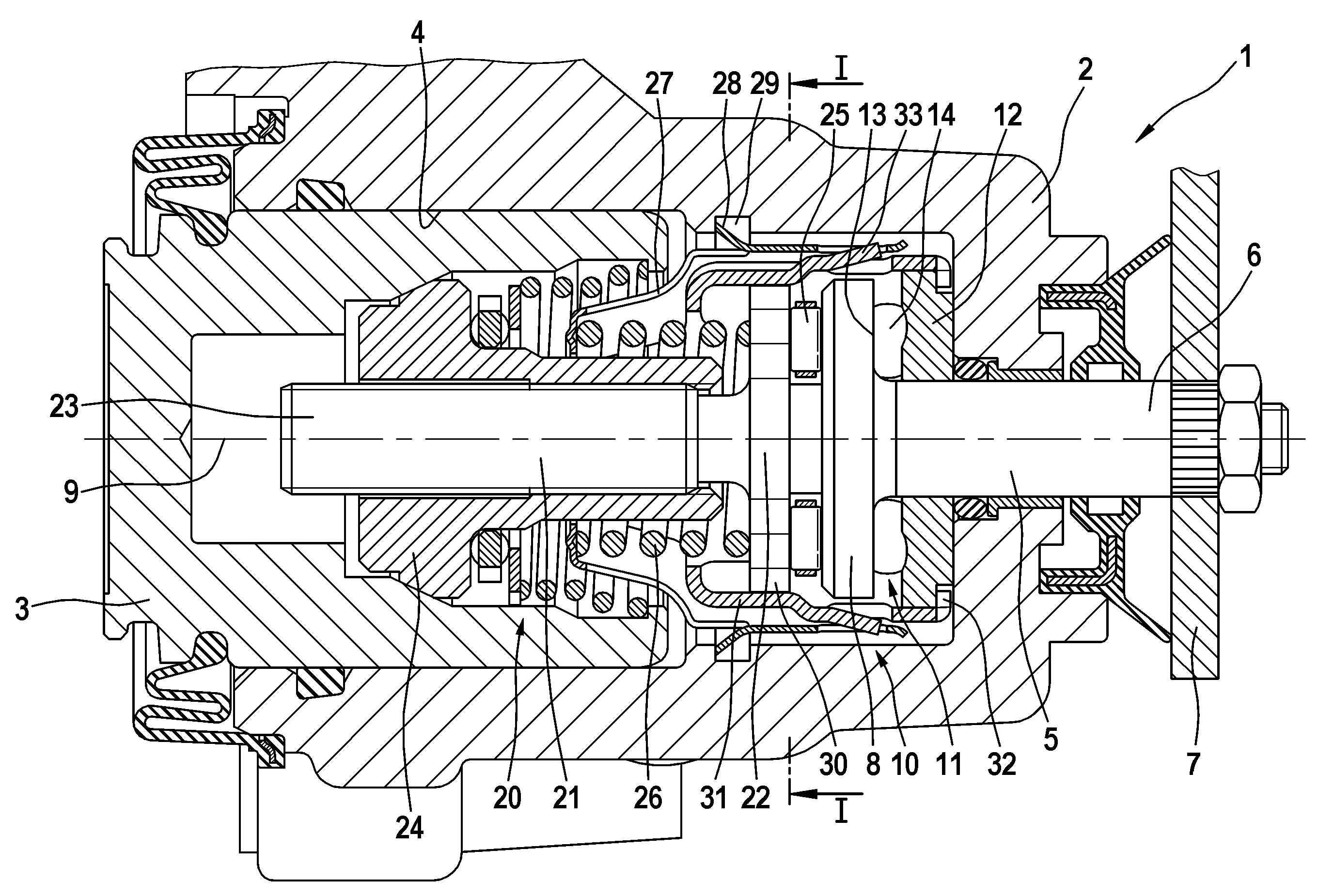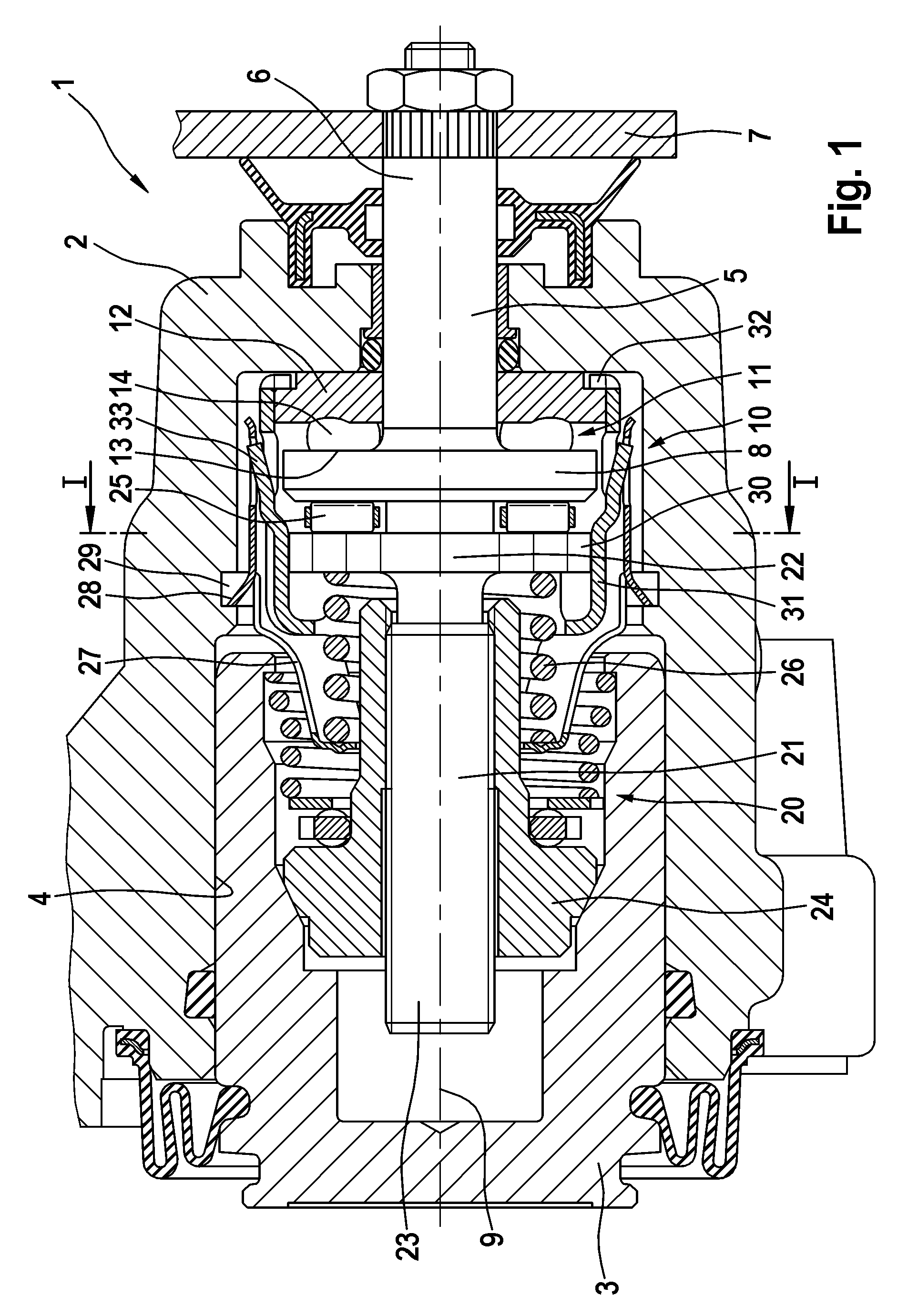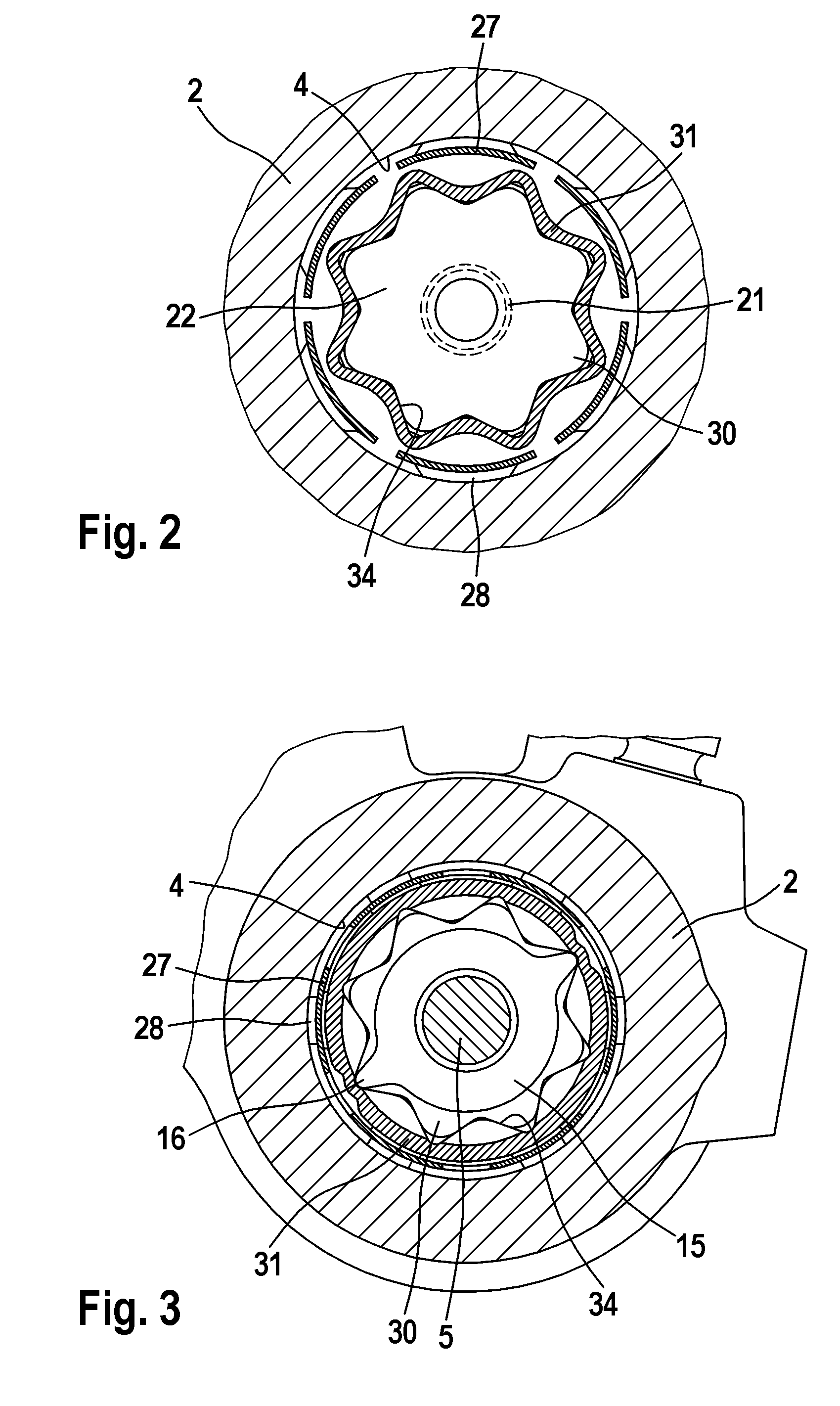Caliper for a disk brake
a disc brake and caliper technology, applied in the direction of sliding contact bearings, engine components, mechanical equipment, etc., can solve the problems of reducing increasing wear, and affecting the stability of the cartridge, so as to reduce the stress level and avoid the effect of tension peaks and loss of inner stability
- Summary
- Abstract
- Description
- Claims
- Application Information
AI Technical Summary
Benefits of technology
Problems solved by technology
Method used
Image
Examples
Embodiment Construction
[0029]The brake caliper 1 of a motor vehicle disc brake illustrated in FIG. 1 comprises, among others, a housing 2, and a piston 3 that is displaceably arranged in a bore 4 for brake application. Piston 3 can be displaced by means of hydraulic pressurization in the case of a service brake operation. To realize a parking brake operation, a shaft 5 is provided, which permits displacing the piston 3 by way of an actuating device 10 inside bore 4. Shaft 5 extends with a shaft end 6, at which an operating lever 7 is fitted, through an opening in housing 2. The actuating device 10 acts upon piston 3 by the intermediary of a length-variable readjusting device 20.
[0030]The actuating device 10 comprises a ramp arrangement 11, which includes a ramp element 12 formed fast with the housing and a ramp element 13 being rotatable relative thereto. The ramp element 13 is designed integrally with a disc-shaped end portion 8 of shaft 5. Several roll bodies 14 are interposed between the ramp elements ...
PUM
 Login to View More
Login to View More Abstract
Description
Claims
Application Information
 Login to View More
Login to View More - R&D
- Intellectual Property
- Life Sciences
- Materials
- Tech Scout
- Unparalleled Data Quality
- Higher Quality Content
- 60% Fewer Hallucinations
Browse by: Latest US Patents, China's latest patents, Technical Efficacy Thesaurus, Application Domain, Technology Topic, Popular Technical Reports.
© 2025 PatSnap. All rights reserved.Legal|Privacy policy|Modern Slavery Act Transparency Statement|Sitemap|About US| Contact US: help@patsnap.com



